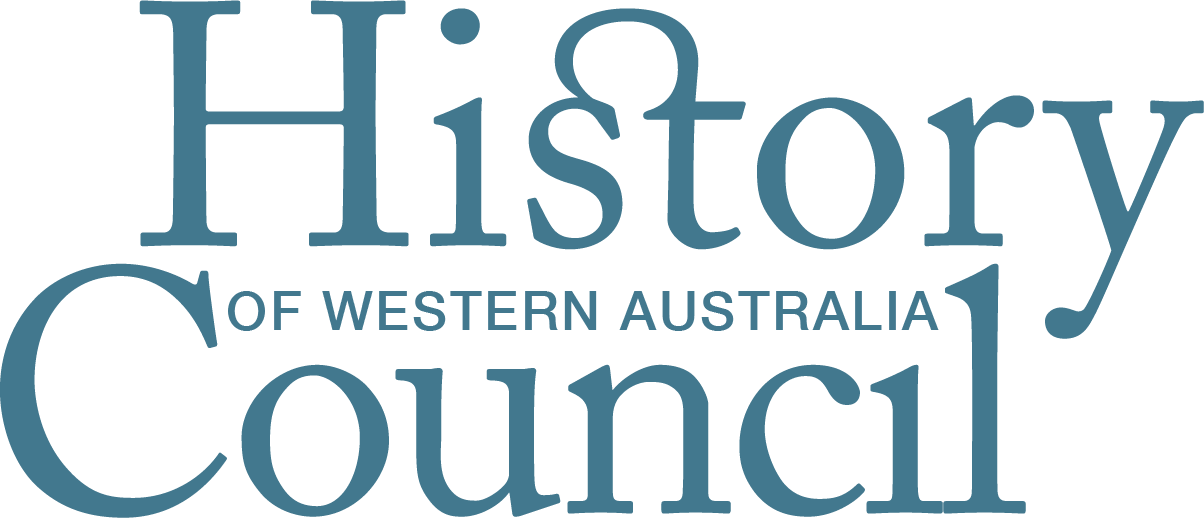Recent work on convictism in Western Australia launched
Duncan Ord launching the volume | Photo Chellyce Birch
The Carceral Colony: Studies in WA History, edited by Jenny Gregory and Louis Marshall was launched by Duncan Ord Director-General of Local Government, Sport and Cultural Industries on 30 September 2020. The launch was held in the Art Gallery of Fremantle Prison, where more than forty guests enjoyed the outstanding exhibition of prison art on display as well as the formalities.
Following an introduction by Bruce Baskerville, Associate Director of UWA’s Centre for WA History, as MC for the night, and a welcome from Paula Nelson, Director of Fremantle Prison, Duncan Ord spoke. Duncan has played a leading role in government in culture and arts, education, training, planning and Aboriginal Affairs. Previous roles in private industry include Dean of the School of Performing Arts (WAAPA) and General Manager of the WA Theatre Company and Black Swan Theatre.
In a generous speech launching the volume, he praised the accessibility and quality of the writing as well as the research. Some research had really struck home for him and he revealed that reading of the role and skills of Aboriginal prisoners in the complex building of the Rottnest Lighthouse had shocked him. We know about Vincent’s role as the builder of Rottnest/Wadjemup, he said, but the role of Aboriginal prisoners has been ignored.
Duncan led the Department of Arts and Culture for some years and, noting the value of historical research exemplified by this volume, he admitted that in contrast to the performing and visual arts, ‘there has been little government support for history. Historical research and writing has been left to the universities’. Not surprisingly his comment that historical publications should be supported in the lead up to Western Australia’s Bicentenary commemorations in 2029, was greeted with cheers and applause from guests.
The Carceral Colony is the third volume of Studies to be published on convictism in WA. Its genesis was a symposium held at Fremantle Prison by UWA’s Centre for WA History in 2018 to commemorate the 150th anniversary of the end of convict transportation to Western Australia.
The first volume of Studies on convictism, edited by Tom Stannage, was published in 1981 at a time when convicts were thought ‘best forgotten’, well before anyone would celebrated their convict ancestry. The second, published in 2006, Building a Colony was edited by Jacqui Sherriff and Anne Brake. It emerged from a seminar held at Fremantle Prison in 2000 to mark the 150th arrival of the first convicts to Western Australia. Each volume has showcased the latest research and contributed new knowledge to our understanding of that period in our history.
We were thrilled that amongst those present at the launch were two historians who contributed to the 1981 volume — Pamela Statham Drew and Jennie Carter, one of the editors of the 2006 volume — Anne Brake, and two historians who have made significant contributions to research into the convicts and the prison research— Robyn Taylor and Lorraine Clarke.
Previous contributors to and editors of the three Convict volumes of Studies in WA History - Lorraine Clarke, Pamela Statham Drew, Jenny Gregory, Jennie Carter, Anne Brake, Louis Marshall and Robyn Taylor | Photo Chellyce Birch
Since it became a heritage site, Fremantle Prison has been a great supporter of research into the convict experience and we were pleased to be able to hold the launch at the Prison. Fremantle Prison holds special significance for many Aboriginal people and their families and, in this volume of Studies, the definition of convicts has been broadened to include not only convicted men transported from Britain, but also the hundreds of Aboriginal people who were imprisoned during the early years of colonial settlement.
The Carceral Colony, co-edited by Louis Marshall who was awarded doctorate for his brilliant research on convict health, greatly expands our understanding of convictism. The volume includes articles that reconsiders who the convicts were, how the convict system related to other forms of labour in the colony, and how it was connected with imperial developments.
It pushes back the date when convictism commenced. Well before 1850, several experiments with unfree labour had already taken place in Western Australia. In 1826, our first convicts provided the labour to establish a New South Wales military garrison at King George’s Sound. Between 1832 and 1849, convicted Nyungar men were taken to the Aboriginal prison on Wadjemup (Rottnest Island). And between 1842 and 1852 boys aged from twelve to eighteen were transported to Western Australia from Parkhurst Prison, as Andrew Gill’s research has shown.
It examines the type of labour provided by convicts, adding new evidence and overturning old. Did you know that Aboriginal prisoners were deployed in road gangs on the mainland and assigned to settlers and government departments? Or that, contrary to previous beliefs, ticket-of-leave convicts working in the community were scarcely better off than convicts incarcerated in Fremantle Prison. It considers who the convicts were. Did you know that some were convicted and transported for sodomy? Or why WA was the only colony that did not receive female convicts?
It discusses archaeological evidence that shows that some of the first construction projects in the Swan Valley used a mixed labour force, that included free workers, transported convicts, Aboriginal prisoner road gangs, and local prisoners. And that marks scratched on cell walls in Fremantle Prison — the graffiti — reveals much of the experience of those incarcerated.
Perhaps most importantly it situates the system of convictism in WA within a wider Imperial context locating it amongst flows of coerced labour right across the British Empire — including indentured Europeans, Indians and Chinese, Aboriginal labour, and child labour. All of which provided the political climate for the introduction of convicts to Western Australia. For many decades Western Australia truly fitted the description of the Carceral Colony.
Jenny Gregory


